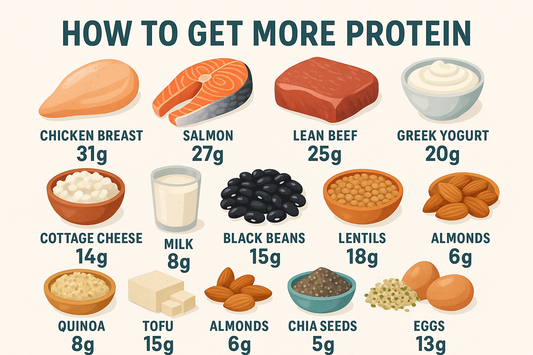Cycling speed is one of the most variable metrics in sports—more so than running, swimming, or most other endurance activities. The same rider can cruise at 15 km/h into a headwind on a heavy commuter bike or hit 45 km/h descending a mountain on a racing bike. Understanding what constitutes "normal" cycling speed requires context: rider fitness, bicycle type, terrain, weather conditions, and riding purpose all dramatically affect the numbers on your cycling computer.
The Speed Spectrum: From Casual Rides to Professional Racing
Leisure Cyclists: Enjoying the Ride
Recreational cyclists riding for pleasure, commuting, or basic fitness typically average 15–20 km/h (9–12 mph) on flat terrain. This pace feels comfortable and sustainable, allowing for conversation, sightseeing, and extended rides without excessive fatigue.
At this speed, you're moving briskly enough to cover meaningful distances—a one-hour ride takes you 15–20 kilometers from home—but not so fast that cycling feels like serious exercise. Many people riding upright city bikes, hybrid bikes, or cruisers with casual clothing naturally settle into this range.
The lower end of this spectrum (12–15 km/h) often includes families riding together, older cyclists, or those navigating crowded bike paths with frequent stops. The upper end (18–20 km/h) represents fit recreational riders on decent bikes who simply aren't pushing hard.
Terrain significantly affects these speeds. The same rider averaging 18 km/h on flat roads might drop to 8–12 km/h on moderate hills and could cruise at 25–30 km/h on gentle descents.
Intermediate Riders: Building Fitness
Cyclists who ride regularly for fitness—several times per week on road bikes or quality hybrids—typically average 20–28 km/h (12–17 mph) on flat to rolling terrain. This represents a noticeable step up in effort and requires proper cycling position, cadence awareness, and reasonable cardiovascular fitness.
At 25 km/h, you're moving fast enough that wind resistance becomes a significant factor. Conversations become more difficult, breathing rate increases noticeably, and maintaining speed requires sustained effort. A two-hour ride at this pace covers 50 kilometers—a respectable distance that provides genuine cardiovascular training.
Riders in this category typically use drop-bar road bikes or performance-oriented fitness bikes, wear cycling-specific clothing to reduce drag, and understand basic concepts like drafting and cadence management. They've moved beyond casual cycling into purposeful training rides.
The variation within this range is substantial. A newer rider pushing hard might sustain 22 km/h, while an experienced recreational cyclist with good fitness can comfortably maintain 27–28 km/h on favorable terrain.
Competitive Amateurs: Serious Speed
Club cyclists, weekend racers, and serious enthusiasts who train regularly typically average 30–35 km/h (19–22 mph) on group rides over flat to moderately rolling terrain. This speed requires genuine athletic fitness, efficient pedaling technique, and often the aerodynamic advantage of riding in a paceline.
At 32 km/h, wind resistance dominates the effort equation—roughly 80% of your energy goes toward overcoming air resistance rather than rolling resistance or gravity. This is why group riding becomes so advantageous at this speed. Drafting behind another rider can reduce your effort by 20–30%, allowing you to sustain speeds that would be unsustainable alone.
Competitive amateur riders use high-quality road bikes, wear tight-fitting cycling kit, and often ride with clipless pedals that allow for more efficient power transfer. They understand pacing strategy, can maintain higher cadences (80–95 rpm), and have developed the leg strength and cardiovascular capacity for sustained high-intensity efforts.
Solo riders at this level might average 28–30 km/h on the same terrain where a group ride maintains 33–35 km/h. The difference highlights the massive advantage of drafting at higher speeds.
Elite Amateur and Semi-Professional Riders: Approaching Pro Speed
Highly trained amateur racers and semi-professional cyclists can sustain 35–40 km/h (22–25 mph) over significant distances on favorable terrain. This requires exceptional fitness, optimal body composition, premium equipment, and often years of structured training.
At these speeds, every detail matters. Aerodynamic positioning becomes critical—even small adjustments to body position or equipment can save watts and increase speed. These riders produce substantial power output (250–350 watts for extended periods), maintain efficient pedaling mechanics under fatigue, and possess the mental toughness to push through significant discomfort.
Races at this level often see average speeds of 38–42 km/h over 100+ kilometer courses, with speeds varying based on terrain, weather, and race tactics. Flat criterium races might average 42+ km/h, while hillier road races drop to 35–38 km/h.
Professional Cyclists: World-Class Performance

Professional cyclists racing in events like the Tour de France routinely average 40+ km/h (25+ mph) over stage distances of 150–200+ kilometers. On flat stages with favorable conditions, the peloton can average 45–48 km/h for hours on end.
The Tour de France showcases cycling's absolute peak performance. Flat sprint stages often average 45+ km/h despite including technical sections, feed zones, and tactical positioning. Mountain stages might average 35–38 km/h despite including brutal climbs, as professionals descend at breathtaking speeds (60–80+ km/h) to balance slower climbing speeds.
Individual time trials see the highest sustained speeds, with top professionals maintaining 50–55 km/h over 30–40 kilometer courses on flat terrain using aerodynamic time trial bikes and specialized positions. These efforts require power outputs of 400+ watts sustained for 45–60 minutes.
Sprint finishes reach even more dramatic speeds, with lead-out trains hitting 65–70 km/h in the final kilometer and sprint specialists touching 75+ km/h at the finish line during a full-gas effort.
What Determines Cycling Speed?
Understanding the physics and physiology behind cycling speed reveals why it varies so dramatically and what factors you can control to ride faster.
Wind resistance dominates at higher speeds, following a cubic relationship with velocity—doubling your speed requires eight times more power to overcome air resistance. At 15 km/h, wind resistance accounts for roughly 30% of total resistance. At 30 km/h, it's about 75%. At 40+ km/h, it exceeds 85%.
This is why aerodynamic positioning matters so much at competitive speeds. Dropping from an upright position to the drops on a road bike can save 30–40 watts at 35 km/h—the difference between struggling to maintain pace and riding comfortably. Time trial positions save even more, but at the cost of comfort and bike handling.
Power-to-weight ratio determines climbing speed and acceleration. On flat ground, absolute power matters most—a heavier, more powerful rider can maintain higher speeds than a lighter rider producing less power. On climbs, power-to-weight becomes critical. A 70kg rider producing 280 watts (4 watts/kg) will climb faster than a 90kg rider producing 315 watts (3.5 watts/kg).
Elite climbers in professional cycling produce 6–7 watts/kg for 30+ minutes on major mountain passes. Strong amateur climbers might sustain 4–5 watts/kg for similar durations. Recreational riders often average 2–3 watts/kg on climbs.
Rolling resistance depends on tire type, inflation pressure, and road surface. High-quality road tires at proper pressure (80–100 psi for most riders) minimize rolling resistance, while mountain bike tires with knobby treads and lower pressure create significantly more resistance on pavement.
The difference between cheap, heavy tires and premium racing tires can cost 15–25 watts at moderate speeds—enough to slow you by 1–2 km/h on a solo ride.
Drivetrain efficiency plays a smaller but measurable role. A well-maintained chain and cassette loses about 2–3% of input power to friction, while a dirty, worn drivetrain might lose 5–8%. This translates to 10–20 watts at moderate power outputs.
Bike weight matters primarily on climbs and during acceleration. On flat terrain at steady speeds, bike weight has minimal impact—a 7kg racing bike and a 10kg touring bike require nearly identical power to maintain 30 km/h on level ground (assuming equal aerodynamics and rolling resistance). But that 3kg difference becomes significant when climbing at 8% gradient or accelerating repeatedly in criterium racing.
Rider position and aerodynamics can make or break speed at competitive paces. An upright commuter position might have a coefficient of drag (CdA) of 0.4–0.5 m². A road cyclist in the drops might achieve 0.3–0.35 m². A time trialist in full aero position might reach 0.22–0.25 m². These differences become dramatic at speed—the commuter might require 400 watts to maintain 40 km/h, while the time trialist needs only 300 watts.
Drafting and group dynamics create the most dramatic speed multipliers in cycling. Riding in the slipstream of another cyclist can reduce your effort by 20–40%, depending on speed and positioning. In a well-organized paceline or peloton, riders can maintain speeds 5–10 km/h faster than they could sustain alone.
This is why professional races see such high average speeds despite including many riders who couldn't sustain those paces individually. The aerodynamic benefit of the peloton allows even domestique riders to maintain 45 km/h when needed.
Terrain obviously affects speed dramatically. The same rider might average 35 km/h on flat roads, 15 km/h on a 7% climb, and 55 km/h on a moderate descent. Hilly routes naturally produce lower average speeds than flat routes, even for the same power output.
Wind conditions can swing average speeds by 5–10 km/h or more. A strong headwind might drop your average from 30 km/h to 22 km/h despite the same effort. A tailwind can inflate speeds to levels unsustainable on calm days. Crosswinds create handling challenges and require more energy to maintain a straight line.
Cadence and pedaling efficiency influence sustainable speed. Most efficient cyclists maintain cadences between 80–100 rpm, though individual optimal ranges vary. Too low a cadence (grinding big gears at 60 rpm) taxes muscles excessively. Too high (spinning at 110+ rpm) becomes cardiovascularly limiting. Finding your optimal cadence for different intensities helps maximize sustainable speed.
Bicycle Type Makes a Huge Difference
The type of bicycle dramatically affects achievable speeds, sometimes more than rider fitness.
Road bikes with drop handlebars, narrow tires, and lightweight frames are optimized for speed on pavement. An intermediate rider might average 25 km/h on a quality road bike.
Hybrid and fitness bikes with flat handlebars and slightly wider tires sacrifice some speed for comfort and versatility. The same rider might average 22 km/h on a hybrid due to less aerodynamic positioning and slightly higher rolling resistance.
Mountain bikes on pavement are significantly slower due to upright position, knobby tires, suspension that absorbs power, and heavier weight. That rider might struggle to maintain 20 km/h on a mountain bike on the same road.
Commuter and city bikes prioritize durability and practicality over speed, with upright positions, heavy frames, and often internal hub gears. Average speeds of 15–18 km/h are typical.
Time trial and triathlon bikes maximize aerodynamics with aggressive positioning and specialized frame designs. An experienced rider might gain 2–5 km/h on a time trial bike compared to their road bike at the same power output.
E-bikes change the equation entirely, with motor assistance allowing riders to maintain 25–32 km/h (depending on local regulations) with modest effort.
How Terrain Changes Everything
Cycling speed varies enormously with topography, making course-to-course comparisons difficult without context.
Flat terrain allows for the highest average speeds. Professional races on pancake-flat courses can average 48+ km/h. Recreational riders might maintain 25–30 km/h comfortably.
Rolling hills reduce average speeds as riders slow on climbs despite speeding up on descents. The energy required to climb exceeds the energy saved by coasting down, resulting in lower overall averages. A rider averaging 28 km/h on flat terrain might drop to 24 km/h on rolling terrain.
Mountain climbs dramatically reduce speeds. Gradients of 5–7% might see recreational riders at 12–15 km/h, while professionals climb at 20–25 km/h on the same grades. Steeper gradients (8–12%) drop speeds further—recreational riders might crawl at 8–10 km/h while pros maintain 15–18 km/h.
Descents can briefly inflate average speeds dramatically. Experienced riders comfortably descend at 50–60 km/h on moderate grades. Professionals touch 80+ km/h on steep descents with favorable conditions, though these speeds require exceptional bike handling skills.
Weather and Environmental Factors
Conditions beyond rider control significantly impact cycling speed.
Headwinds are the cyclist's nemesis, sometimes reducing speeds by 30–40% on strong wind days. A 25 km/h headwind might drop your average from 30 km/h to 20 km/h despite maximum effort.
Tailwinds provide free speed, sometimes adding 5–10 km/h to averages. However, the benefit isn't as dramatic as the headwind penalty because you're riding in your own bubble of disturbed air.
Temperature affects performance, with most cyclists performing best in moderate conditions (15–22°C). Extreme heat causes dehydration and reduced power output. Cold temperatures require extra clothing that increases drag and may reduce muscle efficiency.
Altitude impacts both air resistance (thinner air creates less drag) and oxygen availability (reducing power output). Net effects vary, but sustained climbing at high altitude typically reduces speeds significantly.
Road surface quality matters more than many realize. Smooth asphalt allows for higher speeds than rough pavement, which increases rolling resistance and forces more cautious bike handling.
How to Improve Your Cycling Speed

For riders looking to increase their average speeds, several approaches yield measurable results.
Structured training builds the fitness required for higher sustainable power. Interval sessions, tempo rides, and threshold work all improve different aspects of cycling fitness. Most riders see 10–20% speed improvements in their first year of structured training.
Position optimization often provides quick gains, especially for riders new to drop-bar bikes. Learning to ride comfortably in the drops, adjusting saddle height for efficient pedaling, and improving overall bike fit can add 2–3 km/h without any fitness improvement.
Group riding skills unlock higher speeds through drafting benefits. Learning to ride smoothly in a paceline, trusting other riders, and contributing to group rotation can allow you to experience speeds 5–10 km/h faster than you can sustain alone.
Weight reduction—both bike and body weight—helps climbing speed and acceleration. Losing 5kg of body weight typically improves climbing speed by 5–8% for the same power output. Upgrading to lighter wheels and components shows smaller but measurable gains.
Aerodynamic improvements matter increasingly at higher speeds. Investing in tighter clothing, removing unnecessary accessories, and upgrading to more aerodynamic wheels can save 20–40 watts at 35+ km/h.
Technical skill development includes efficient gear selection, smooth cadence management, cornering speed, and descending confidence. Many riders limit themselves not through fitness but through inefficient technique.
Equipment maintenance ensures your bike isn't costing you speed. Clean drivetrains, properly inflated tires, and adjusted components eliminate easily fixable sources of resistance.
Realistic Improvement Expectations
New cyclists often see dramatic improvements—jumping from 18 km/h averages to 25 km/h within 6–12 months isn't unusual with consistent riding and basic training.
Intermediate riders might gain 2–4 km/h over a season through focused training, position optimization, and skill development.
Advanced riders fight for smaller gains. Adding 1–2 km/h to an already fast 32 km/h average might require a full season of structured training, equipment upgrades, and position refinement.
The Bottom Line
Cycling speed exists on an enormous spectrum from casual 15 km/h rides to professional 45+ km/h racing. A "normal" speed depends entirely on your fitness level, equipment, terrain, and purpose.
Recreational cyclists averaging 18–22 km/h enjoy cycling for fitness and transportation. Intermediate riders maintaining 25–28 km/h have developed solid fitness and technique. Competitive amateurs sustaining 32–35 km/h demonstrate serious training and dedication. Professionals averaging 40+ km/h over long distances represent the pinnacle of human cycling performance.
But here's what truly matters: your speed is meaningful in context. Whether you're working to maintain 20 km/h on your commute or training to average 35 km/h in local races, improvement relative to your baseline represents genuine athletic development. Cycling rewards consistency, smart training, technical refinement, and the willingness to push through discomfort—regardless of the numbers on your cycling computer.














